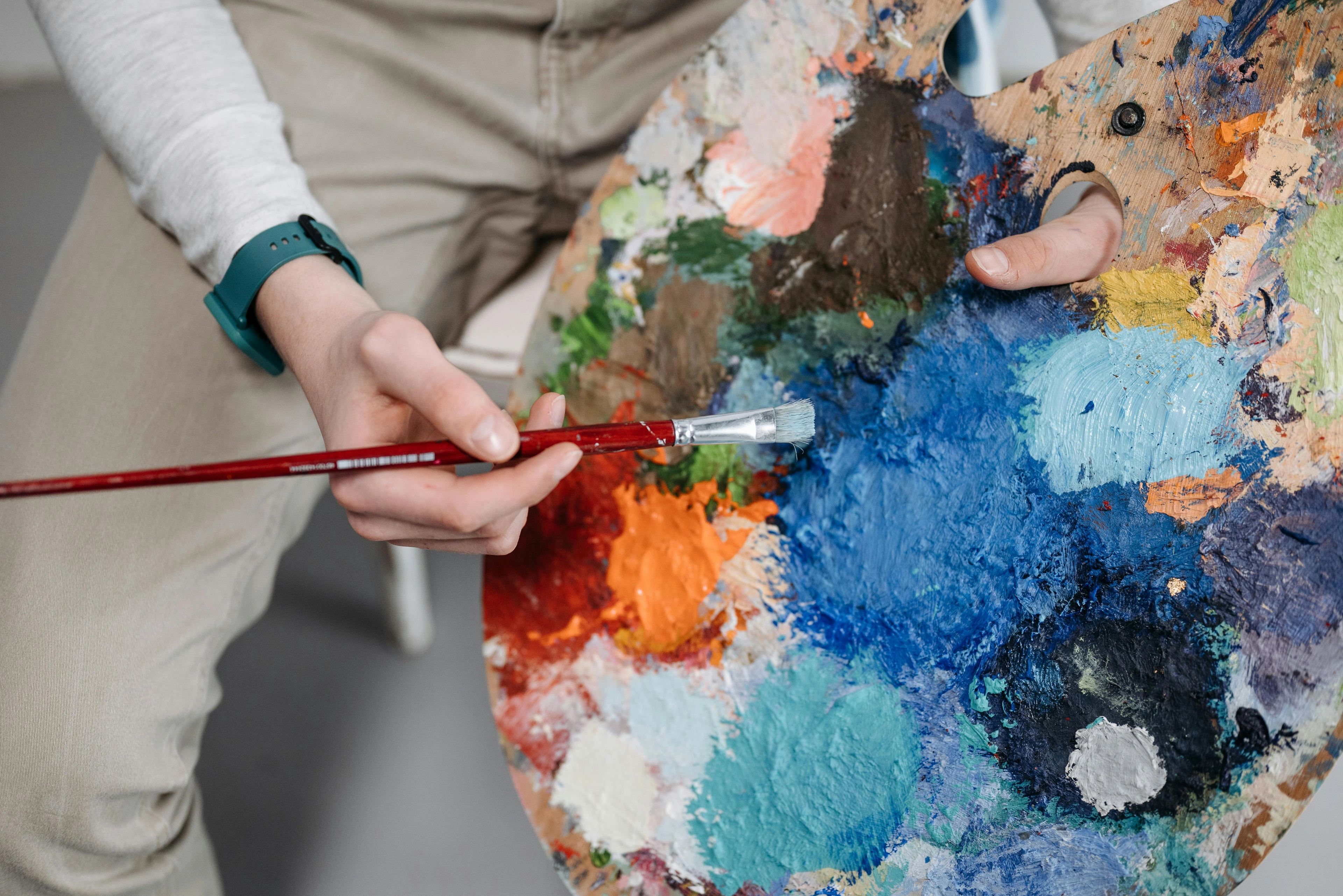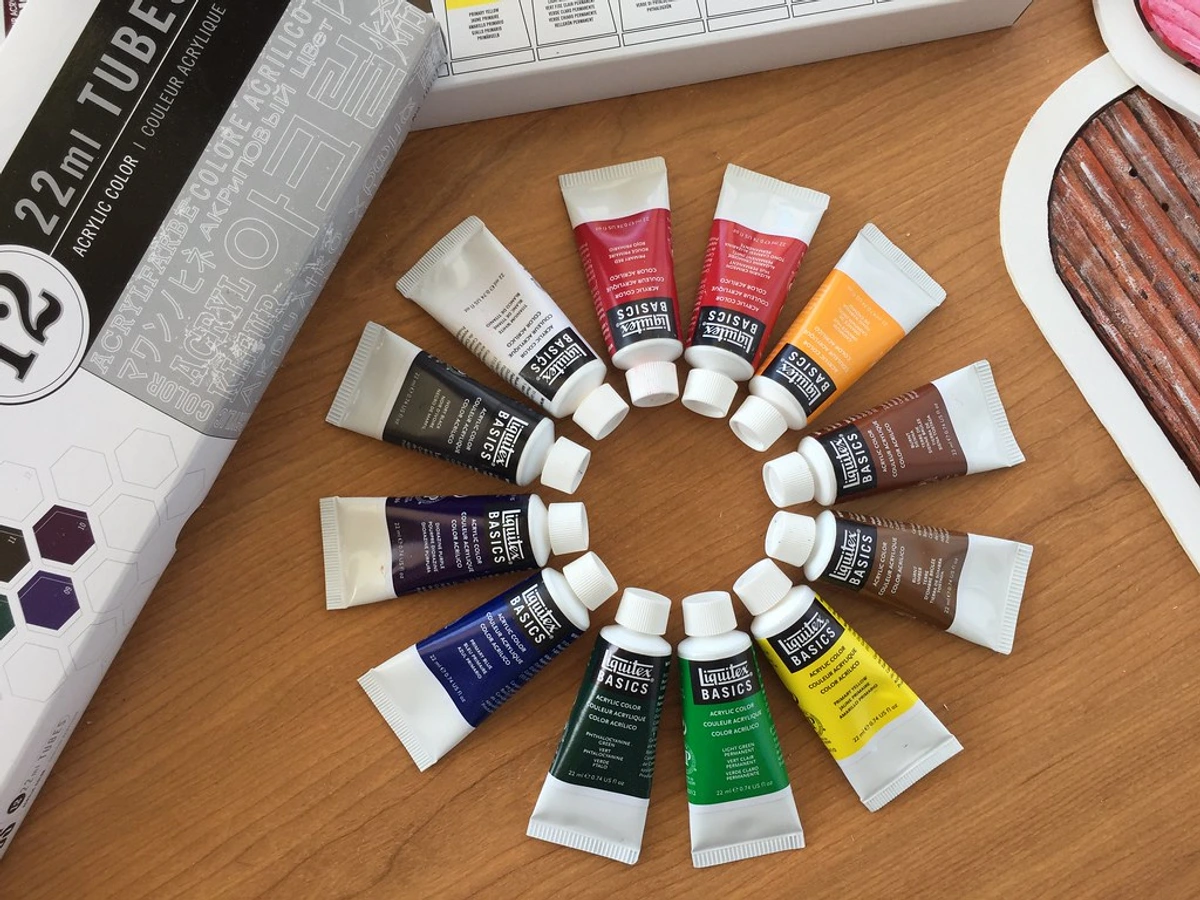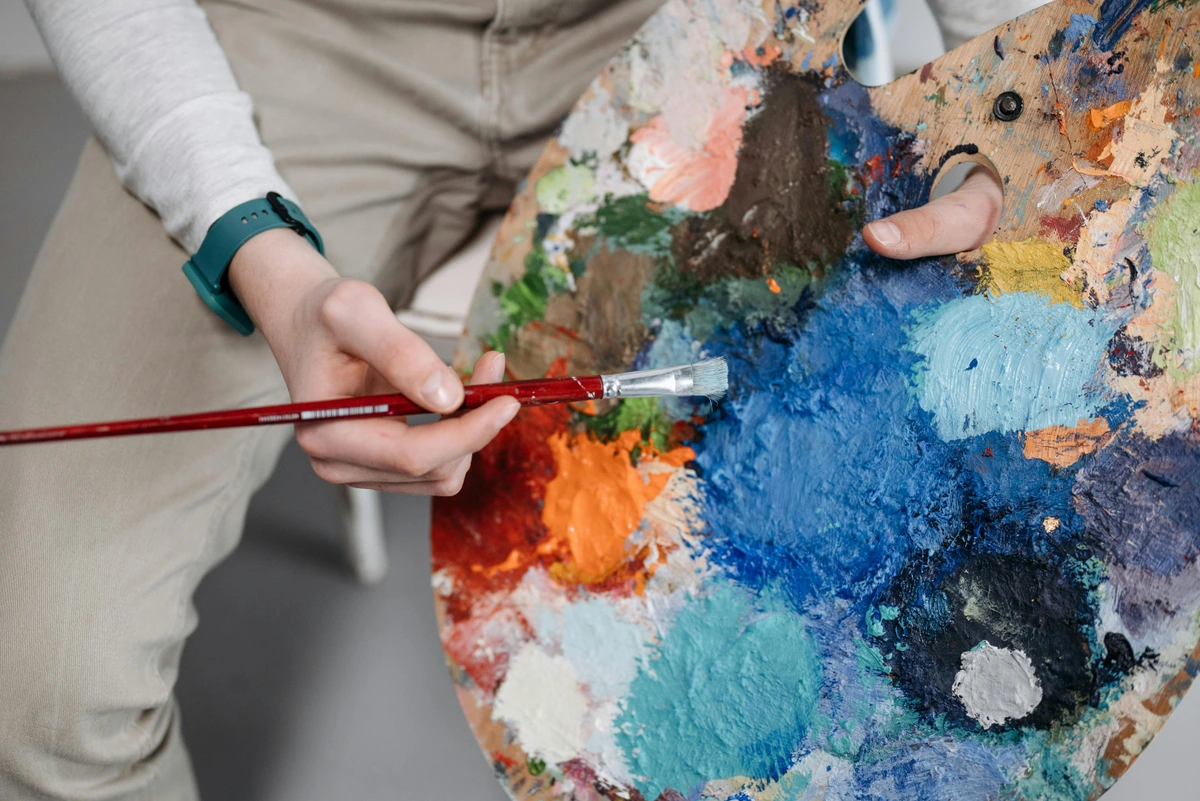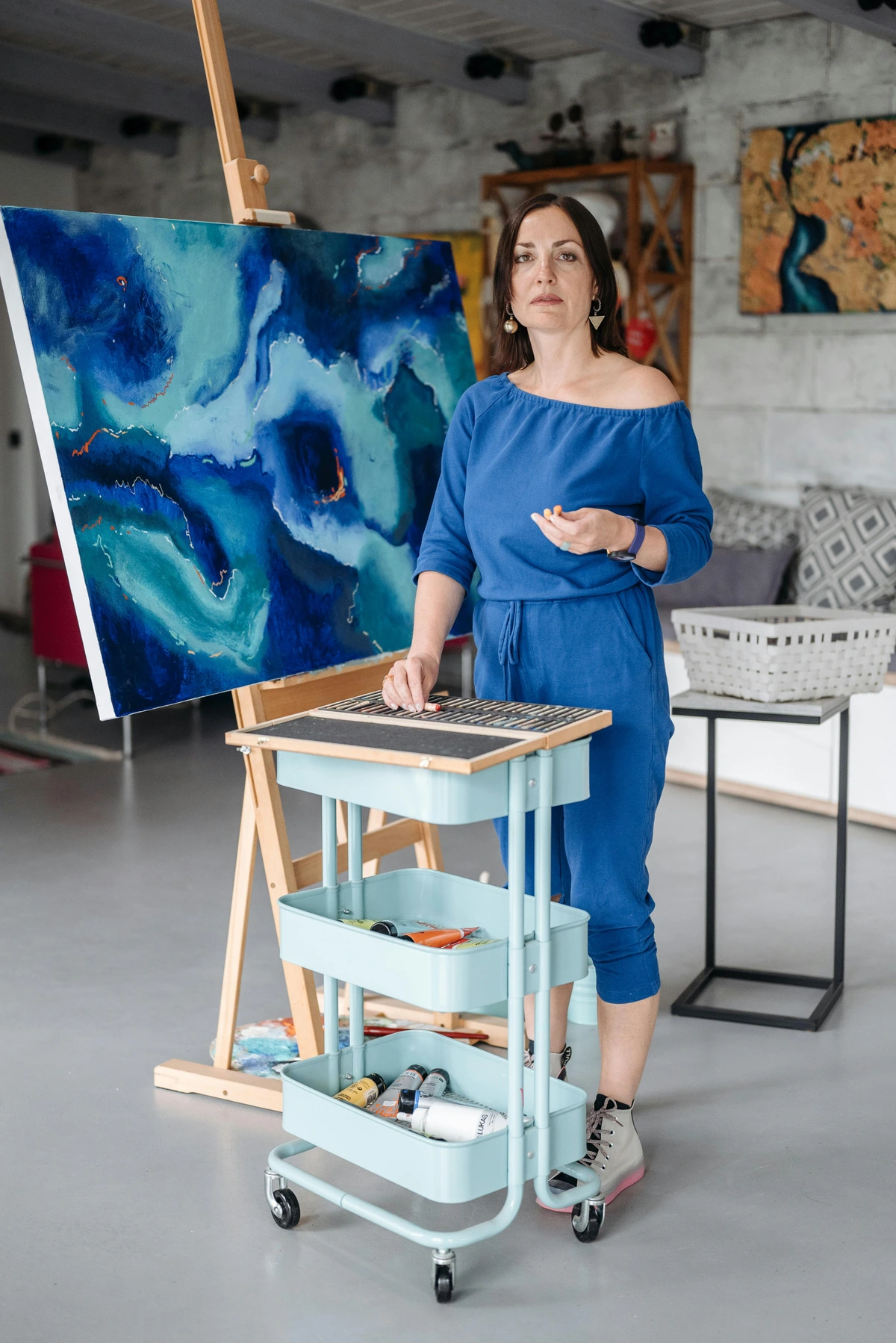
Liquitex Basics Acrylic Paint Review: My Honest Take on Budget-Friendly Art Supplies
Ever wondered if budget-friendly paints can truly deliver? I'm diving deep into Liquitex Basics acrylics, sharing my personal experience, tips, and whether they're the right choice for your creative journey, especially if you're just starting out or working on large abstract pieces.
Liquitex Basics Acrylic Paint Review: My Honest Take on Budget-Friendly Art Supplies
Ah, Liquitex Basics acrylic paint. Just the name probably conjures up images for many of us, right? Maybe it was the first set you ever bought, or perhaps you've seen them lining the shelves of every art supply store. I know for me, these tubes were a staple during my student days and, honestly, still sneak their way into my studio even now. There's just something about their accessibility that's hard to resist, especially when you're exploring new ideas or working on those colossal abstract pieces where paint consumption is, shall we say, generous.
But let's get real for a moment. With so many fantastic types of paint for artists out there, often with eye-watering price tags, the question always lingers: can a student-grade paint like Liquitex Basics actually perform? Or are we just settling for less? I've spent countless hours, and a fair few tubes, putting these paints through their paces, and I'm ready to spill the beans on what I've genuinely discovered.
What Exactly Are Liquitex Basics?
Before we get too deep, it’s worth clarifying what we're talking about here. Liquitex Basics is Liquitex's student-grade line of acrylic paints. This means they're formulated with a slightly lower pigment concentration and often use more economical pigments compared to their professional-grade counterparts. Don't let the term "student-grade" fool you into thinking they're strictly for beginners, though. I've seen some absolutely incredible work created with these very tubes. They're designed to offer good quality at an affordable price, making art accessible without completely compromising on performance.

My First Impressions & Ongoing Experience
I remember picking up my first set of Liquitex Basics years ago. The promise was simple: good color, decent coverage, without breaking the bank. And largely, they delivered. Over the years, as my style evolved, I continued to experiment with them, often using them alongside more expensive paints.
One thing that immediately struck me, and still does, is their consistency. They have a smooth, creamy texture that's easy to work with straight from the tube. It’s not too thick, not too runny – a really happy medium. This makes them incredibly versatile, whether I'm laying down broad strokes for an abstract painting or trying to achieve finer details. They blend quite nicely too, which is always a bonus when you're trying to achieve those seamless transitions without too much effort. I find myself reaching for them often when doing underpaintings or initial layers, especially if I'm not entirely sure where the painting is going yet. Why waste precious professional-grade paint on something that might get completely covered up, right?

Diving Deeper: Key Characteristics of Liquitex Basics
Let's break down some of the specifics that really matter when you're choosing an acrylic paint. I've put together a little table to help visualize my findings:
| Feature | My Observation Overview: Liquitex Basics acrylic paints are a staple for anyone curious about art, from absolute beginners to the artist working on massive, experimental pieces. These paints strike a remarkable balance between quality and cost, making them an excellent choice for learning, practicing, and even creating stunning finished works. My own studio is always well-stocked with these, not just for practical purposes like underpaintings, but also for those creative bursts when I need vibrant color without the pressure of a premium price tag. In this review, I’ll dive into their characteristics, practical applications, and help you decide if they're the right fit for your artistic endeavors.
The Lowdown on Liquitex Basics: What Makes Them Tick?
So, what are we really looking at with Liquitex Basics? Think of them as the friendly, approachable younger sibling to Liquitex's professional lines. They're designed with a focus on usability and value. This means you get a good range of colors, reliable consistency, and decent opacity, all while keeping your wallet happy. The pigment load is generous enough to give you vibrant results, but they might not have the same intense, single-pigment purity you'd find in a professional-grade tube. For me, that's rarely an issue, especially when I'm layering colors or mixing my own custom hues. They dry relatively quickly, which is a hallmark of acrylics, and are wonderfully versatile for mixing with various acrylic mediums.
Why I Keep Coming Back to Liquitex Basics
My relationship with Liquitex Basics has been a long and fruitful one. When I was first starting out, the sheer cost of art supplies felt like a huge barrier. These paints changed that, allowing me to experiment freely without worrying about wasting expensive materials. And even now, with years of experience under my belt, they remain invaluable for several reasons:
- Exploration Without Financial Fear: Seriously, how many times have you hesitated to try a wild new technique because you didn't want to use up your premium paint? With Basics, that fear evaporates. I use them for countless painting experiments, color studies, and just getting those initial ideas down on canvas.
- Underpainting Powerhouse: They are absolutely perfect for underpaintings. I can lay down a solid base layer, get my composition and values sorted, and then build on it with more opaque or textured layers using either more Basics or a higher-grade paint.
- Volume, Volume, Volume: When working on large-scale pieces, especially my abstract works that demand a lot of paint, these are a lifesaver. You can achieve impressive coverage without emptying your bank account.
- Mixing Versatility: Their smooth consistency makes them incredibly easy to mix, not just with each other, but also with other acrylic brands and a wide array of acrylic mediums. I've used them with everything from gloss medium to heavy gel, and they always integrate beautifully.

My Deep Dive: Performance Metrics
Let’s get into the nitty-gritty. What do these paints actually do when you put brush to canvas? Here’s my breakdown based on extensive use:
Pigment Load and Vibrancy
For a student-grade paint, the pigment load is surprisingly good. The colors are generally vibrant and true. While they might not have the intense depth of, say, a cadmium red from a professional line, they hold their own beautifully. I've found that some colors, particularly the blues, greens, and earth tones, are remarkably rich. The whites are opaque enough for highlights, and the blacks are deep and satisfying.
Consistency and Application
This is where Liquitex Basics truly shines for me. Their creamy, medium-body consistency is a dream to work with. It's thick enough to hold some brushstrokes, allowing for some impasto techniques if you build up layers, but thin enough to spread easily without feeling watery. This makes them fantastic for:
- Smooth coverage: Great for laying down flat areas of color.
- Blending: They offer a decent open time (the time before they start to dry), allowing for good blending on the canvas, especially if you work quickly or use a wet blending technique.
- Layering: They dry quickly enough to layer efficiently without long waits, which is a huge plus for those of us who are a little impatient.
Lightfastness
Lightfastness refers to how well a paint's color resists fading over time when exposed to light. This is a crucial factor for artists concerned with the longevity of their work. Liquitex Basics generally performs well here, with most colors rated good (II) or very good (I) on the ASTM scale. This means your artwork should retain its vibrancy for decades under normal display conditions. While not all colors are equally lightfast (always check individual tube ratings), the overall performance is impressive for their price point, making them suitable for finished pieces, not just studies.
Drying Time
Like most acrylics, Liquitex Basics dry relatively quickly. This is a double-edged sword: great for layering, but can be challenging for extended blending. I've learned to adapt by using a spray mister to keep my palette and canvas moist, or by incorporating slow-drying mediums if I need more working time. But for quick sketches, energetic mark-making, or building up texture, their rapid drying is a definite advantage.

Who Are Liquitex Basics For?
Based on my extensive experience, I'd say Liquitex Basics are an excellent choice for a wide range of artists:
- Beginners and Students: Absolutely. If you're just starting your artistic journey, these paints offer a fantastic entry point. They're forgiving, affordable, and teach you the fundamentals of working with acrylics without intimidation.
- Experimental Artists: If you love to play, explore, and try new techniques, Basics are your friends. Their low cost means you can be fearless in your experimentation.
- Abstract Artists: For those of us who love to slather on paint, create bold textures, or work on large canvases, the value proposition of Basics is undeniable. You get a lot of paint for your money, allowing for freedom in scale and application.
- For Underpaintings and Studies: As I mentioned, even professional artists can benefit from keeping these around for initial layers, studies, or when they need to cover a large area cheaply.
When Might You Consider Stepping Up?
While I genuinely love Liquitex Basics, it's important to acknowledge their limitations. If you're working on highly detailed, hyper-realistic portraits where pigment purity and archival permanence are paramount, you might eventually want to explore professional-grade paints. These often have higher concentrations of single pigments, offering unparalleled brilliance and lightfastness across their entire range. For instance, if you're comparing them to brands reviewed in our best acrylic paint brands for professional artists article, you'll notice a difference in depth and intensity. But for most applications, especially for abstract or expressive work, Basics stand up remarkably well.
Frequently Asked Questions About Liquitex Basics
Got questions? I bet you do! Here are some of the common ones I hear or have asked myself over the years.
Are Liquitex Basics good quality?
Yes, for a student-grade paint, they offer excellent quality. They have good pigment load, smooth consistency, and decent lightfastness for most colors, making them a reliable choice for beginners and experienced artists alike for various applications.
Can I mix Liquitex Basics with professional-grade acrylics?
Absolutely! I do this all the time. They mix beautifully with other acrylic paints and mediums without any issues. This allows you to integrate more vibrant or specific professional colors into your work while keeping overall costs down with Basics.
Do Liquitex Basics need to be varnished?
Like all acrylic paintings, varnishing your finished piece is highly recommended. It protects the artwork from dust, UV light, and environmental damage, and can also unify the sheen of your painting. I've covered this extensively in my guide on how to varnish an acrylic painting.
How long does Liquitex Basics take to dry?
Liquitex Basics dry relatively quickly, similar to most acrylics. Typically, they are touch-dry within 10-20 minutes, depending on the thickness of the application, humidity, and temperature. They fully cure over several days.
Can Liquitex Basics be used on canvas without gesso?
Technically, yes, you can use them directly on raw canvas, but I wouldn't recommend it. Gessoing your canvas first is crucial for acrylics. It provides a proper surface for the paint to adhere to, prevents paint from soaking into the canvas unevenly, and helps the colors appear more vibrant. It's a fundamental step in how to prepare a canvas for acrylic painting. Plus, gesso is cheap!
My Final Thoughts: A True Studio Workhorse
So, after all this, what's my final verdict on Liquitex Basics? They're a resounding yes from me. They've earned their place as a true workhorse in my studio and, I suspect, in countless others. They offer an incredible balance of quality, versatility, and affordability that is hard to beat. Whether you're a complete novice dipping your brush into paint for the very first time, or a seasoned artist looking for a reliable, cost-effective option for large projects and experimentation, Liquitex Basics will not disappoint.
They free you up to create, to experiment, and to learn without the constant worry of expense. And isn't that what art is all about? Getting lost in the process, making a beautiful mess, and discovering something new about yourself and the world around you. So go on, grab a tube (or a set!), and let those creative juices flow. You might be surprised at what you can achieve. If you're ever curious about the art I make, feel free to explore my latest pieces – you'll find a lot of experimentation reflected there!




